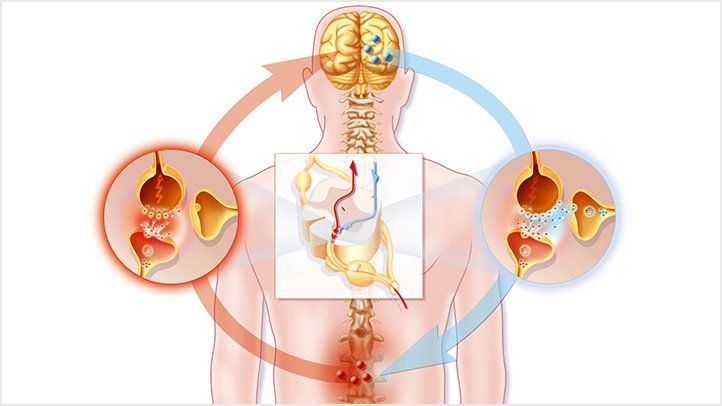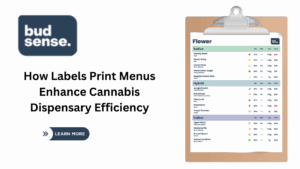Migraines are more than just headaches—they can be debilitating, affecting daily life, productivity, and overall well-being. While there are several treatment options, not all work for everyone. One medication that’s gained attention for off-label use in migraine prevention and relief is
Originally developed to treat seizures and nerve pain, Gabapentin 400 mg ability to calm overactive nerves has made it a candidate for managing chronic migraines. But is it effective? What are the risks? And how does it compare to traditional migraine treatments?
In this article, we’ll explore the pros and cons of using Gabapentin 400 mg for migraines, examine how it works, what research says, and real patient experiences to help you decide whether it’s a viable option for you.
What Is Gabapentin?
Gabapentin is a prescription medication classified as an anticonvulsant. It’s most commonly prescribed for:
-
Epilepsy
-
Postherpetic neuralgia
-
Peripheral neuropathy
-
Restless Leg Syndrome (RLS)
-
Fibromyalgia
Gabapentin works by affecting calcium channels in the nervous system, reducing the excitability of nerve cells, which can help manage pain and seizures. It’s not FDA-approved for migraines, but doctors often prescribe it off-label for migraine prevention, especially in chronic cases.
Understanding Migraines
Migraines are complex neurological events that involve:
-
Intense, throbbing headaches
-
Nausea and vomiting
-
Sensitivity to light and sound
-
Visual disturbances (auras)
They can last from a few hours to several days. Chronic migraines are defined as having headaches on 15 or more days per month, with migraine symptoms on at least 8 of those days.
Migraines are believed to be caused by abnormal brain activity, possibly involving the trigeminal nerve, brain chemicals like serotonin, and inflammation of blood vessels.
How Gabapentin 400 mg May Help Migraines
Gabapentin doesn’t treat an acute migraine attack. Instead, it may be used to:
-
Prevent migraines from occurring
-
Reduce the frequency and severity of migraine episodes
-
Manage associated nerve pain or trigger-related discomfort
Gabapentin calms nerve activity, which may prevent the overactive nerve firing that leads to migraine symptoms. It’s thought to modulate GABA activity, though it doesn’t bind directly to GABA receptors.
Pros of Using Gabapentin 400 mg for Migraines
1. May Reduce Migraine Frequency
Studies and patient reports suggest that Gabapentin 400 mg can decrease the number of migraines experienced monthly—especially in people with chronic migraines.
2. Non-Addictive Alternative
Unlike opioids or certain anti-anxiety medications, Gabapentin 400 mg is not considered habit-forming, making it a safer long-term option.
3. Helps With Comorbid Conditions
Gabapentin is often prescribed to people with both migraines and:
-
Anxiety
-
Fibromyalgia
-
Neuropathic pain
-
Insomnia
It may offer dual benefits, helping with both migraines and other coexisting conditions.
4. Mild Side Effect Profile (For Some)
Compared to older migraine medications, Gabapentin is often well-tolerated when started at a low dose and gradually increased.
5. May Improve Sleep
Poor sleep is a common migraine trigger. Gabapentin can improve sleep quality, reducing the likelihood of headache onset.
Cons of Using Gabapentin for Migraines
1. Not FDA-Approved for Migraines
Because Gabapentin is off-label for migraines, it lacks large-scale clinical studies proving its effectiveness.
2. Varied Effectiveness
Some patients find relief, while others notice no improvement in their migraines. Results are highly individual.
3. Potential Side Effects
Common side effects include:
-
Drowsiness
-
Dizziness
-
Fatigue
-
Weight gain
-
Coordination issues
-
Brain fog
4. Tolerance Build-Up
Over time, some users report that Gabapentin loses effectiveness, requiring dosage increases or alternative medications.
5. Possible Withdrawal Symptoms
If stopped abruptly, users may experience:
-
Insomnia
-
Anxiety
-
Nausea
-
Seizures (in rare cases)
Always taper off under a doctor’s supervision.
What the Research Says
Several studies have explored Gabapentin’s role in migraine prevention:
Key Findings:
-
A 2001 study in the journal Cephalalgia found that Gabapentin significantly reduced migraine frequency compared to placebo.
-
A 2002 trial showed that Gabapentin 900–2400 mg/day was effective in reducing migraines, with tolerable side effects.
-
However, a 2013 Cochrane Review concluded that evidence supporting Gabapentin’s use in migraines was limited and mixed.
Takeaway: Some studies show promise, but more robust research is needed.
Real User Experiences
Positive Experiences:
“I used to have migraines every week. After taking 400 mg of Gabapentin twice a day, they’re down to one a month.”
“It helps me sleep better and manage my fibromyalgia too. Total win for me.”
“I feel like my brain is calmer. No more warning auras or weird visual patterns.”
Negative Experiences:
“Did nothing for my migraines, just made me feel tired and forgetful.”
“I gained 10 pounds in a month. Not worth it for me.”
“It helped for a while but then stopped working. I had to switch to Topamax.”
Gabapentin 400 mg: Typical Dosing for Migraines
Always consult your doctor before starting Gabapentin. A typical dosing schedule may look like:
-
Day 1: 300 mg at bedtime
-
Day 2: 300 mg twice a day
-
Day 3: 400 mg twice a day (or 400 mg 3x/day)
The maximum dose can go up to 3600 mg/day, but that’s usually reserved for seizure disorders. For migraines, lower doses like 400–1200 mg/day are often sufficient.
Slow titration helps reduce side effects and allows your body to adjust.
Who Might Benefit Most?
Gabapentin 400 mg may be a good option if you:
-
Have chronic migraines
-
Experience neuropathic pain or fibromyalgia
-
Can’t tolerate triptans or other migraine meds
-
Want a non-addictive option
-
Suffer from migraine-related anxiety or sleep issues
Who Should Avoid It?
Gabapentin may not be the right choice if you:
-
Have a history of kidney disease
-
Are pregnant or breastfeeding (use caution)
-
Take CNS depressants or opioids
-
Are sensitive to anticonvulsants
-
Need a fast-acting treatment for acute migraines (Gabapentin is not effective here)
Alternative Migraine Treatments
If Gabapentin isn’t effective or suitable, other options include:
Prescription Medications:
-
Triptans (e.g., sumatriptan, rizatriptan)
-
Beta-blockers (e.g., propranolol)
-
Topiramate
-
Amitriptyline
-
CGRP inhibitors (e.g., Aimovig, Emgality)
Natural Remedies:
-
Magnesium
-
Riboflavin (Vitamin B2)
-
Butterbur and Feverfew
-
Acupuncture
-
Biofeedback therapy
Final Thoughts: Is Gabapentin 400 mg Right for Your Migraines?
Gabapentin 400 mg is not a miracle cure for migraines—but it may offer real relief for certain individuals, especially those with chronic symptoms or coexisting pain conditions.
While it’s not FDA-approved for migraines, its ability to calm nerve activity, reduce frequency, and improve sleep makes it a viable off-label option for migraine prevention. However, side effects and individual variability must be carefully weighed.
Always consult your healthcare provider before starting or adjusting your Gabapentin regimen.






